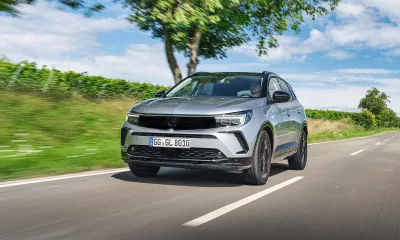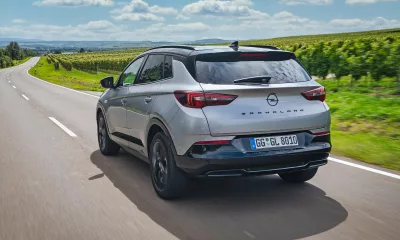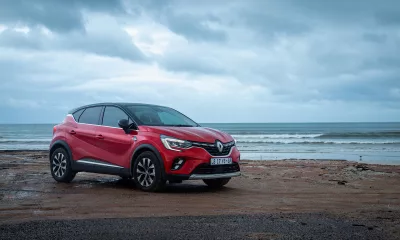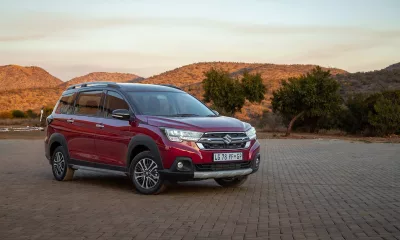The revised Opel Grandland arrives just as South African consumer trends indicate a significant shift toward buying C-SUVs. With an updated face and a few more features, does it have enough attractive qualities to keep up with the segment leaders? We sent Road Test Editor Kyle Kock to Gauteng to find out.

What are we driving?
The Grandland is essentially the range-topper of Opel’s regular-sized passenger vehicles. In line with the brand’s focus on SUVs and crossovers, the refreshed model remains at the top of the company’s offerings. It also shares its platform with the multiple award-winning Peugeot 3008, and is still powered by the same 1,6-litre turbocharged four-cylinder motor that makes 121 kW and 240 N.m of torque. Opel claims that this motor sips fuel at a rate of just 7,0 L/100 km and emits 156 grams of carbon dioxide.
Looking for a new or used Opel? Find it here with CARmag.
What’s new on the Opel Grandland?
Many would agree that the styling of the older Grandland was a bit too bland by the time it made its debut here in 2018. Opel’s addressed the matter by adding the brand’s bolder Vizor, which along with some revisions to the bumper and clamshell bonnet has made the nose appear significantly wider. The sharper lines also make the Grandland look way more modern.
It’s also got Opel’s adaptive IntelliLux lighting system which uses 168 LEDs in each headlamp to make out the oncoming traffic and avoid blinding oncoming motorists. Instead of the matte finish to the plastic cladding on the lower sections of the bumpers and doors, black gloss panels now preside (or they can be finished in the body colour).

Inside, the upper half of the facia has also been redesigned and boasts a few more niceties like the instrument panel and infotainment touch screen that forms what Opel calls its Pure Panel. On the local launch of the Grandland, we only had access to the range-topping Ultimate model, so the seats that were developed in collaboration with the German research association AGR to optimise driving posture were finished in leather, with the added boon of heating and ventilation as well. This model also comes with keyless entry and start, a motion-activated tailgate that the keyholder can open with the movement of a foot under the rear bumper, and a wireless charger in the centre console that has a nifty strap to hold down a compatible mobile phone.
Related: Opel’s new Blitz emblem will feature on production cars from 2024
Safety specification is comprehensive across the range, with forward collision warning, automatic emergency braking, lane-keep assist and pedestrian detection. On the Ultimate model, this also means the inclusion of lateral parking sensors, an automatic parking assistant, reverse camera, blind spot warning and adaptive cruise control.

What’s the Opel Grandland like to drive?
Opel has smartly addressed previous concerns about the ride being slightly harsh on the outgoing Grandland. Instead of low-profile tyres wrapped around its 18-inch alloys, the range-topping Grandland makes use of a chunky 215/65 tyre that helped absorb bumps on the launch route from Midrand to Hartbeespoort. There are now also driving modes to choose from, and after briefly experiencing the sharpened response in Sport mode, I opted for the more refined experience in Eco and chose to use the 1,6-litre turbopetrol’s torque curve to pass slower-moving vehicles.
Verdict
The competition in this segment is stiff, with the likes of the Chery Tiggo7 Pro and Tiggo 8 Pro, the Haval H6 and H6 GT and even the Kia Sportage offering a lot of car for the money, especially at this Grandland Ultimate’s price point. And that’s unfortunately, that’s what counts against the model. Yes, its safety spec is comprehensive, the redesign is a success, and its cabin is comfortable but at R720 900, will South African buyers see this as a viable alternative to the popular segment players? Too few will, I think.
Opel Grandland Ultimate Fast Facts
Model: Opel Grandland Ultimate 1,6T
Price: R720 900
Engine: 1,6-litre, turbopetrol, four-cylinder
Transmission: Six-speed automatic
Power: 121 kW at 6 000 r/min
Torque: 240 N.m at 1 400 r/min
Driven wheels: Front
Fuel consumption: 7,0 L/100 km
CO2 emissions: 156 g/km
Rivals: Citroën C5 Aircross, Chery Tiggo 8 Pro, Haval H6, Kia Sportage, Peugeot 3008
Looking for a new or used vehicle? Find it here with CARmag.










